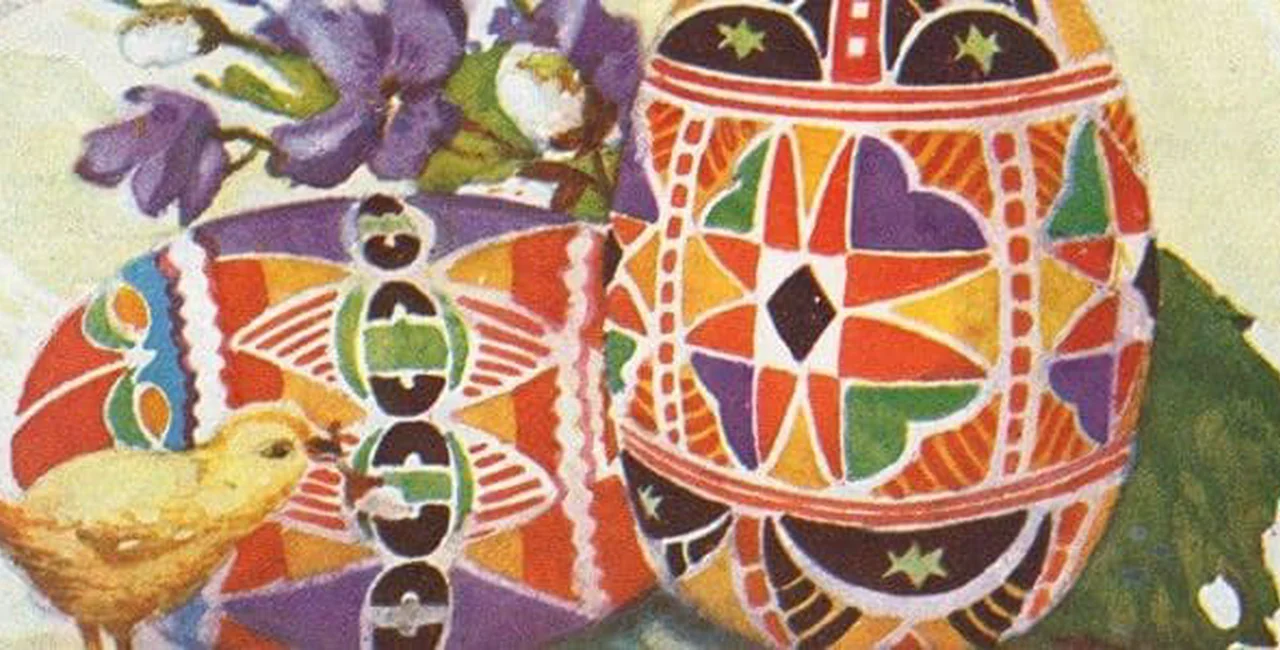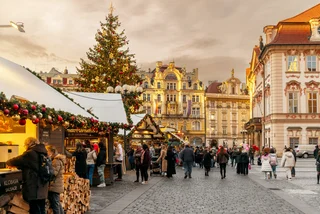The kraslice tradition is deeply rooted in the Czech Easter festivities, an ancient pagan symbol that has been transformed into a folk art gem by generations of skilled and steady hands.
Archeologists trace the custom back 900 years to the 11th century from which fragments of a black painted egg discovered in Southern Moravia date.
PARTNER ARTICLE
Brilliant Naturally Colored Eggs
Historians at the City of Prague Museum tell us that eggs were originally colored red to symbolize life, the renewal of energy, new blood, and love.
Red eggs were rolled along the spines of heifers to bring healthy calves, they were also smashed against the roots of trees for luck.
Eggs were colored using natural dyes; onion skins and boiled grass yielded brilliant greens and golds.
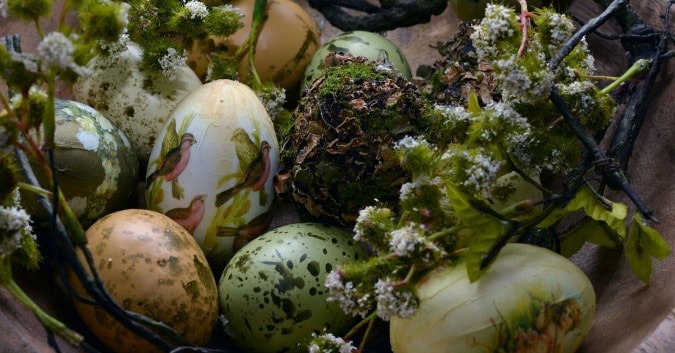
There is an important difference between the boiled eggs given to Easter Monday revelers who go door to door wielding pomlázka; many of the eggs you see with those stunningly ornate patterns were hollowed out before decorating (for tips on doing so, see this instructional video here).
Preserving an Ancient Art
The art of kraslice is so essential to Czech culture that an Association of Painters of the Czech Republic (AMMK) has been created to preserve the tradition. According to the group’s site, it can take up to two hours or more for a single hand to produce one egg.
This weekend the museum will be hosting a series of workshops (March 24, 25, and 31) for those who’d like to try their hand at these detailed techniques. They’ve also shared with us the five primary styles of Czech egg decoration:
Decorating Eggs the Czech Way
- Wax batik (vosková batika)– This technique is among the most common in Bohemia and Moravia. Elaborate designs are drawn onto white eggs with colored molten wax or beeswax is applied to tined eggs. (If you think this looks tricky you’re right—but this YouTube video shows you how to do it with melted crayons, an empty beer can, and a pencil!)
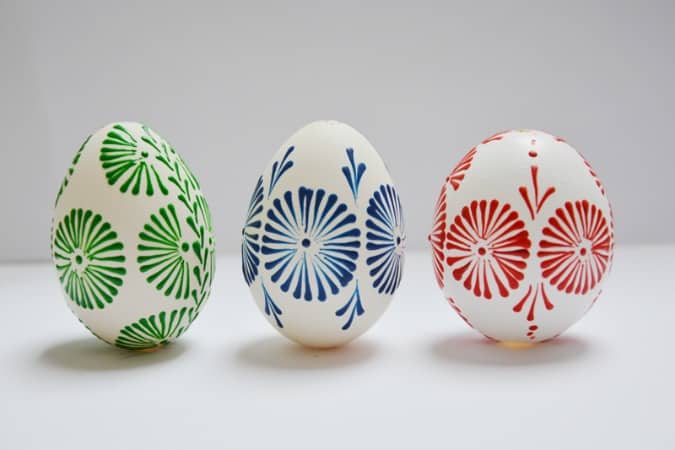
- Etching (Vyškrabování) – A sharp needle, pin, nail or, a special file is used to engrave an ornate motifs and patterns that are extraordinarily delicate and detailed; this style is particularly traditional in Slovácko where black or blue ink, reminiscent of indigo textile printing, is used on an egg that has been hardboiled and treated with shellac, not hallowed out.
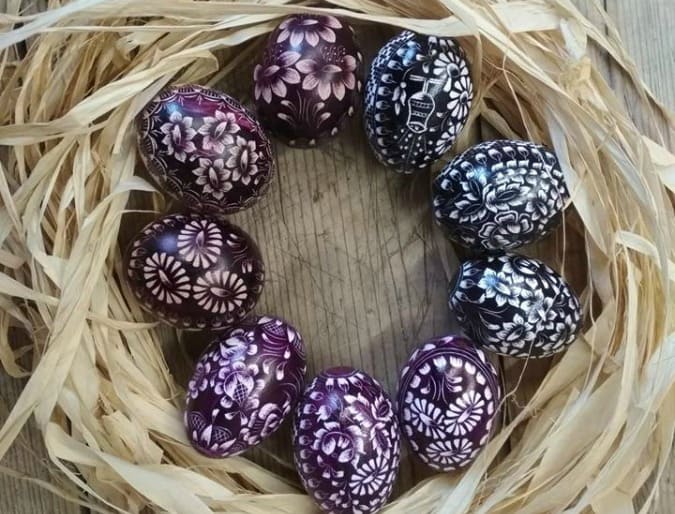
- Straw decorating (Zdobení slámou) – Straw decorating technique utilizes rye or wheat that is soaked in warm water, sliced into half lengthwise, and scraped free from the pulp. The remaining pieces are cut into diamond shapes that are glued into patterns and smoothed over the egg.
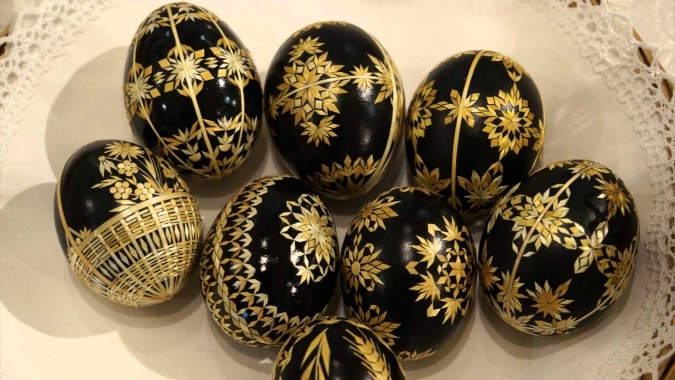
- Madeira – Here a pattern is sketched onto a white egg (some pros suggest goose eggs because they are firmer) using a conical drill bit by hand or with an electric drill. The holes are rimmed with wax and sometimes wax drippings are used as further decoration; reminiscent of lacework.
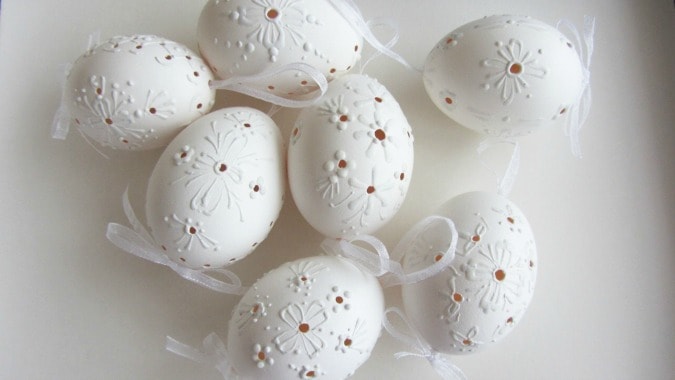
- Decoration with cat tails (Zdobení dužninou z jezerní sítiny) – This 100-year-old decoration method is a South Moravian specialty that involves gathering rushes from a marshy area and using the foamy plant pulp to make beads that adorn white eggs which are also embellished with a fabric, velvet, or ribbon.
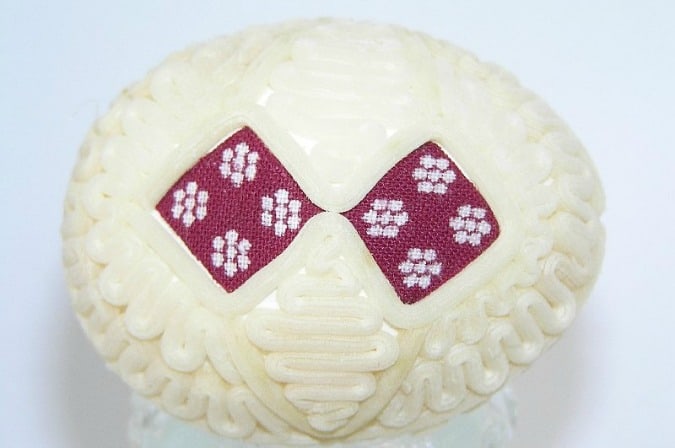
To attend one of the workshops on offer this month (60 CZK) see the Facebook page for the event.
The workshops will focus on some of the techniques featured here, though others do exist including wrapping eggs in a fine wire or bobbin lace.












 Reading time: 3 minutes
Reading time: 3 minutes 